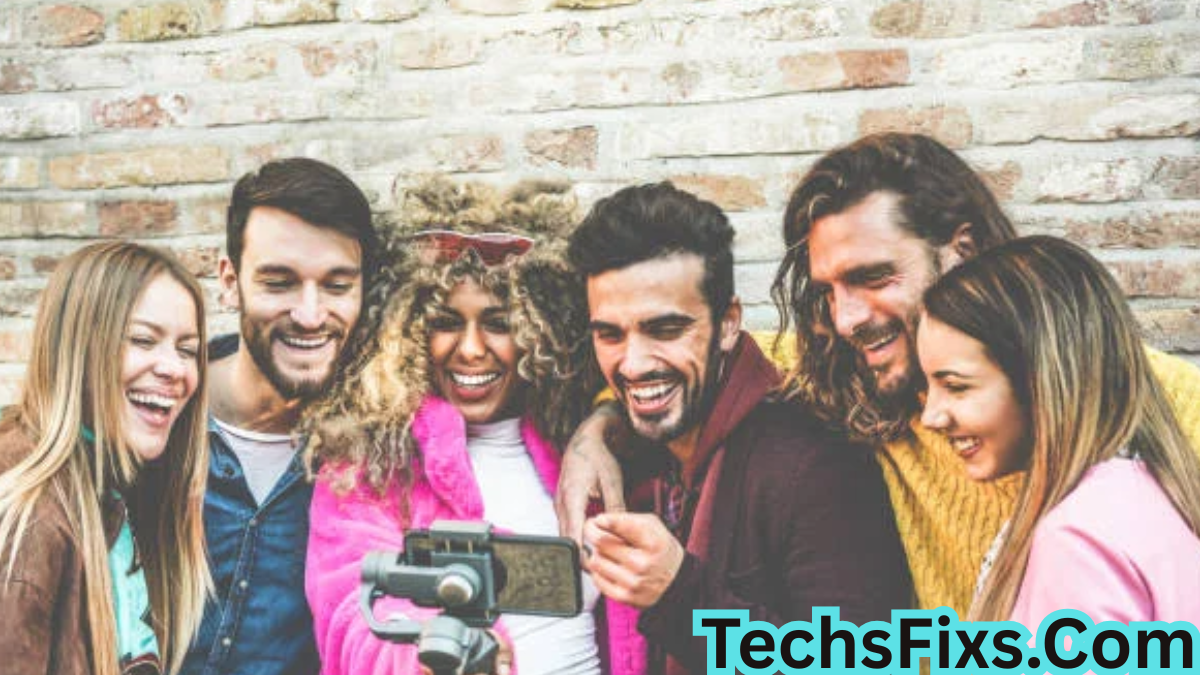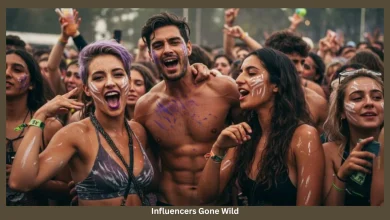Influencers gonewild digital landscape has dramatically transformed the way people consume content, interact with media, and even form opinions. At the heart of this transformation is the rise of influencers—individuals who gain prominence through social media platforms such as Instagram, TikTok, YouTube, and Twitter. These influencers are not traditional celebrities backed by studios or PR firms. Instead, they are self-made stars whose popularity stems from their ability to connect with audiences in a direct and often intimate way. However, the line between stardom and scandal has grown thin, giving rise to a phenomenon now commonly referred to as “Influencers GoneWild.”
The Creation of Influencer Fame
In a world where algorithms determine what content is seen, influencer fame can be both sudden and overwhelming. Many influencers start with humble beginnings, posting makeup tutorials, fitness routines, comedy sketches, or vlogs about their daily lives. As their followers grow, so does their reach and influence. This shift from an ordinary online presence to an internet celebrity status often comes with immense pressure, expectations, and scrutiny. The speed Influencers gonewild at which these individuals rise to fame often leaves them ill-prepared for the public and private responsibilities that come with it.
The Pressure to Perform
Influencers live under the constant pressure to perform and maintain their audience’s attention. Unlike traditional actors or musicians who work on projects with breaks in between, influencers are expected to provide consistent and often daily updates. The demand to stay relevant and trending can lead to a relentless pursuit of content that is more shocking, controversial, or emotionally charged than before. It is in this environment that some influencers begin to “go wild,” stepping outside the bounds of responsible behavior in their attempts to captivate their followers.
Crossing Boundaries for Content
The term “Influencers GoneWild” captures the extent to which social media stars will sometimes push the envelope for engagement. This does not always refer to explicit content. It can also mean risky stunts, aggressive or offensive commentary, insensitive jokes, or blatant violations of privacy and community standards. These actions often backfire, drawing criticism and controversy instead of praise. Yet the underlying motivation remains the same: creating content that captures attention and drives up views, likes, and shares.
The Role of Virality
Virality is both a goal and a trap for influencers. When a piece of content goes viral, it can bring instant fame and new opportunities. But virality also encourages creators to chase shock value rather than authenticity or substance. Influencers may adopt outrageous personas or stage dramatic events to stay in the public eye. This pursuit can erode their credibility and damage their mental health. As they continue to one-up themselves, the risk of spiraling out of control increases.
The Disconnect Between Persona and Reality
One of the core issues in the world of influencers is the widening gap between online personas and real-life identities. To maintain their brand, influencers often curate a perfect image that does not reflect their true selves. This curated persona may appear glamorous, carefree, or morally upright, but the reality can be starkly different. When the mask slips—whether through leaked messages, live-stream meltdowns, or real-world controversies—the public reacts strongly. The more carefully constructed the image, the more devastating the fall from grace tends to be.
Public Backlash and Cancel Culture
The internet is quick to celebrate rising stars, but it is just as quick to tear them down. Cancel culture has become a defining feature of the influencer age. One misstep, one poorly-worded tweet, or one offensive video can lead to a flood of backlash. Brands drop sponsorships, followers leave in droves, and media coverage intensifies. Some influencers attempt to apologize or explain, while others double down or disappear entirely. The cycle of fame, controversy, and cancellation is now a familiar narrative in the world of social media.
The Psychological Toll of Influencing
Behind every viral video or picture-perfect post is a real person dealing with immense psychological pressure. Influencers often struggle with anxiety, depression, and burnout. They are judged constantly by people they have never met and must navigate hate, criticism, and unrealistic expectations. For those who begin to “go wild,” their actions can sometimes be symptoms of deeper issues. Substance abuse, mental breakdowns, or erratic behavior can all be cries for help masked as entertainment.
Monetization and Moral Compromise
The influencer economy is fueled by monetization strategies that reward engagement over integrity. From sponsored posts and affiliate links to merchandise and subscription content, influencers can earn significant income. However, the drive for profit can lead to ethical compromises. Some influencers promote harmful products, exaggerate claims, or manipulate their audiences for financial gain. These actions can tarnish their reputation and lead to public distrust. When financial incentives outweigh moral considerations, the results are often chaotic and damaging.
Platform Responsibility and Regulation
Social media platforms play a crucial role in enabling and amplifying influencer behavior. Algorithms prioritize content that triggers reactions, regardless of its truthfulness or safety. While platforms claim to enforce guidelines, enforcement is often inconsistent or delayed. Influencers who cross the line may be temporarily suspended or demonetized, but these consequences rarely come before significant damage is done. Calls for better oversight and accountability continue to grow, but meaningful change remains elusive.
The Rise of Controversial Figures
“Influencers GoneWild” also includes a specific subset of creators who lean into controversy as a brand strategy. These individuals cultivate personas built on provocation, outrage, and rebellion. They thrive on backlash, seeing it not as a threat but as a tool for growth. Their content is deliberately inflammatory, and they view themselves as free speech warriors or anti-establishment figures. This type of influencer is particularly polarizing, attracting fierce loyalty and intense criticism in equal measure.
The Influence on Younger Audiences
Influencers have a disproportionate impact on young audiences, many of whom view them as role models. When these influencers behave irresponsibly, the effects ripple through impressionable followers. Young fans may mimic dangerous stunts, adopt harmful mindsets, or develop distorted views of success and self-worth. Parents, educators, and even fellow influencers have expressed concern over the lack of regulation and ethical standards in this space. The consequences of “gone wild” behavior often extend far beyond the influencer themselves.
Redemption and Comebacks
Not all influencers who “go wild” are permanently canceled. In some cases, they stage comebacks through public apologies, charitable work, or new content that reflects personal growth. These redemption arcs can be genuine or performative, and the audience response varies. Some fans appreciate the honesty and give second chances, while others remain skeptical. Redemption in the influencer world is often transactional, tied to how well the comeback content performs and whether sponsors return.
Fame as a Double-Edged Sword
Influencer fame is seductive but precarious. It brings money, attention, and admiration, but also invites judgment, jealousy, and scrutiny. The same traits that help influencers rise—charisma, relatability, creativity—can become liabilities when mishandled. Fame amplifies both strengths and flaws. For those who are not emotionally or professionally equipped to handle it, the experience can be overwhelming and even destructive. The narrative of “Influencers GoneWild” underscores the fragile nature of internet stardom.
Audience Complicity and Responsibility
Audiences are not mere observers in the influencer ecosystem—they are active participants. Every view, like, comment, and share contributes to an influencer’s visibility and success. In many cases, audience demand for sensational content drives influencers to behave more recklessly. Viewers may enjoy the drama or feel entertained by the chaos, but this consumption fuels a toxic cycle. Holding influencers accountable also means reflecting on how audience behavior shapes their incentives and decisions.
Learning From the Chaos
Despite the drama and scandal, the influencer world offers valuable lessons. It shows the importance of transparency, the dangers of unchecked fame, and the need for boundaries in online spaces. It also highlights the potential for digital platforms to foster both creativity and destruction. As the industry matures, there is growing awareness of mental health, digital ethics, and the importance of authenticity. The goal is not to eliminate influencers, but to encourage a healthier, more sustainable model of influence.
The Changing Landscape of Influence
The influencer world is evolving. Audiences are becoming more discerning, brands are seeking authentic partnerships, and platforms are experimenting with new ways to promote responsible content. While sensationalism will always have a place, there is also a shift toward creators who prioritize honesty, quality, and positive impact. “Influencers GoneWild” may remain a reality for some, but the broader trend is one of growth, accountability, and reinvention.
Conclusion: A Reflection on Digital Stardom
The phrase “Influencers GoneWild” encapsulates the highs and lows of digital stardom. It is a reflection of a culture that elevates individuals quickly and often without guardrails. Some influencers navigate this world with grace and responsibility, while others succumb to its pressures and pitfalls. The stories of those who go wild serve as cautionary tales, reminding both creators and consumers of the power and peril of online influence. As society continues to grapple with the realities of internet fame, the hope is that a more balanced, ethical, and empathetic approach will emerge.
FAQs
What does “Influencers GoneWild” mean?
It refers to situations where social media influencers behave in shocking, irresponsible, or controversial ways, often leading to public backlash or scandal.
Is it always about explicit content?
No, the term covers a wide range of behaviors including dangerous stunts, offensive remarks, unethical promotions, and erratic online conduct.
Why do influencers engage in such behavior?
Many feel pressured to stay relevant or popular. The algorithm rewards sensational content, leading influencers to take risks or act out for attention.
Do influencers recover from these situations?
Some do. Through public apologies, behavioral changes, and time, a number of influencers manage to stage comebacks. Others fade from relevance or Influencers gonewild continue facing criticism.
How can audiences help prevent this trend?
By supporting ethical content, thinking critically about what they consume, and not glorifying harmful behavior, audiences can encourage better influencer practices.




